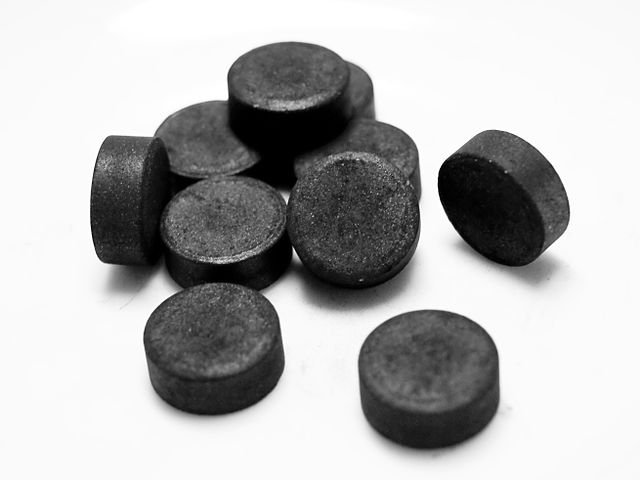Bone Char: Difference between revisions
(inserted image, inserted video, added text about agriculture) |
m (+ link fix) |
||
| Line 4: | Line 4: | ||
==Uses in Agriculture== | ==Uses in Agriculture== | ||
Bone char may also be an intermediate step of processing bones for agriculture. Thick bones such as skulls are very difficult to compost. | Bone char may also be an intermediate step of processing bones for agriculture. Thick bones such as skulls are very difficult to compost. Charring them makes them brittle, and they can then put through a [[Biochar Crusher|crusher]]. The material becomes much easier to compost. The video below shows how bone char could have a role in local food systems. It even shows the possibility of combining it with [[Compost Tea|compost tea]]. | ||
*The Biochar Journal: [https://www.biochar-journal.org/en/ct/70-Bone-Char-made-in-Central-Park-New-York "Bone Char made in Central Park, New York"] | *The Biochar Journal: [https://www.biochar-journal.org/en/ct/70-Bone-Char-made-in-Central-Park-New-York "Bone Char made in Central Park, New York"] | ||
Revision as of 14:01, 12 August 2016
Bone char is a very effective water filter that removes many heavy metals, chlorine, fluoride and other contaminants from water. It is also used in sugar refining and as a black pigment. It is mostly made from cow bones. The production process is similar to biochar but it contains only 10% carbon. It often has a very high phosphate content of 80%.
Uses in Agriculture
Bone char may also be an intermediate step of processing bones for agriculture. Thick bones such as skulls are very difficult to compost. Charring them makes them brittle, and they can then put through a crusher. The material becomes much easier to compost. The video below shows how bone char could have a role in local food systems. It even shows the possibility of combining it with compost tea.
- The Biochar Journal: "Bone Char made in Central Park, New York"
Videos
